Launched in October 2024, TEOSS (The European Orthoptera Sound System) is one of 12 satellite projects funded by the TETTRIs initiative. With €149,300 in funding, TEOSS is on a mission to transform the study and conservation of European Orthoptera by harnessing the power of sound—a key characteristic of grasshoppers, crickets, and katydids.
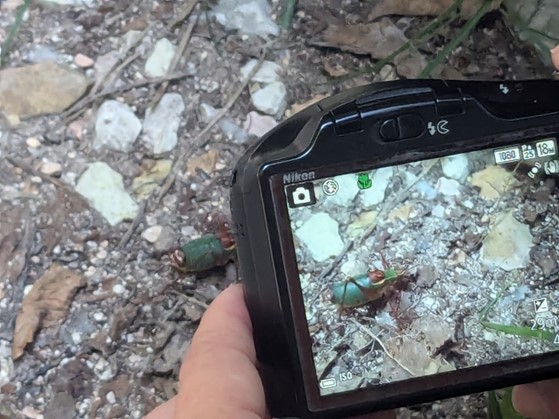
The role of sound in Ortophera Research
Orthoptera, the group of insects that includes grasshoppers, crickets, and katydids, are well known for their ability to produce sound through stridulation. These sounds play an essential role in their communication and are key to understanding their behavior and ecology. Europe is home to an impressive 1,082 Orthoptera species, with rich biodiversity in regions such as the Mediterranean and the Alps.
Interestingly, the calls of these insects often provide more reliable clues for identifying species than physical traits. For instance, the closely related species in the Chorthippus biguttulus-brunneus-mollis group can be distinguished more accurately by their unique sounds than by their appearance.
However, several challenges limit the broader use of sound in Orthoptera research:
- Sound-based identification is a niche skill, accessible to experts but underutilized by nature enthusiasts.
- Bioacoustics is underdeveloped in taxonomy for discovering new species.
- Many sound libraries exist across Europe, but they are scattered and lack a centralized platform to support research and conservation by professionals and enthusiasts.
TEOSS aims to bridge these gaps by developing the “European Orthoptera Sound System” (EOSS), a meta-database of sounds from Orthoptera species. This system will unify and enhance existing resources, laying the groundwork for sound recognition models that can support taxonomic studies and citizen science initiatives.
“What makes TEOSS unique is its focus on sound-based identification and its potential to transform Orthoptera research. We’re not just collecting data; we’re creating a new way of understanding these fascinating insects. By listening closely to the intricate sounds of Europe’s Orthoptera, we can uncover new dimensions of biodiversity.” shares Florent Prunier, the project coordinator at the Genal Field Station.
About TEOSS
TEOSS aims to transform the study and identification of Orthoptera species in Europe by developing innovative tools, fostering knowledge, and building networks for Orthoptera bioacoustics. The initiative focuses on following key objectives:
- Training Recorders
TEOSS will provide workshops for professionals and enthusiasts to improve their ability to record and identify Orthoptera sounds. Participants will learn to identify Orthoptera by sound, record high-quality audio, and share data via open platforms like xeno-canto.org and Observation.org. This will increase the volume and quality of sound data, creating a positive feedback loop: better data improves machine learning models, which in turn attract more contributors.
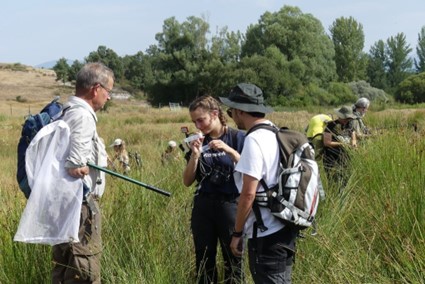
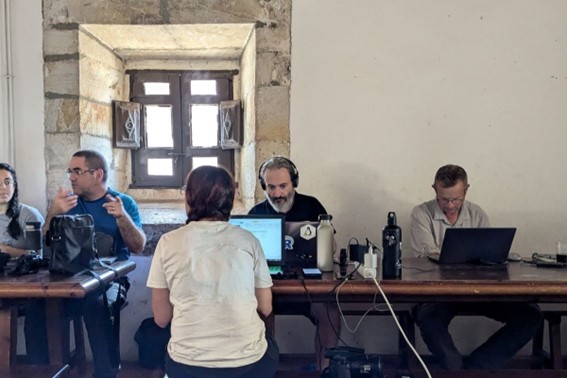
2. Create a sound meta-database
At the core of the project is the development of EOSS—a comprehensive sound meta-database that aggregates Orthoptera recordings from diverse sources. This will include:
- Digitizing and managing sound files from private collectors, researchers, and museums.
- Standardizing metadata (e.g., species, location, date, recording conditions).
- Connecting databases to allow seamless updates and integration with sound recognition models.
This system will serve as a resource for taxonomists, conservationists, and citizen scientists, enabling more efficient species identification and discovery.
3. Identify data gaps
TEOSS will analyse available recordings by species and prioritise fieldwork for those lacking representation.
1. Prepare for AI Integration
The dataset will be optimised for machine learning applications to support automated species identification.
2. Build an European network development
TEOSS will establish a Europe-wide network of scientists and citizen scientists dedicated to Orthoptera bioacoustics.
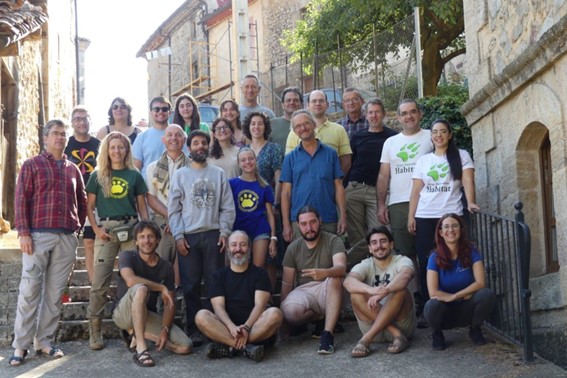
“Being part of TEOSS is incredibly exciting. As someone who has studied Orthoptera for years, I’m amazed by the potential of this project to revolutionize our field and engage a wider audience in biodiversity research.” add Filippo Buzetti, a local bioacoustics specialist
- The team behind TEOSS
TEOSS brings together a consortium of research institutions from the three main Mediterranean peninsulas in Europe, each contributing unique expertise to the project’s success:
- The Genal Field Station / AEA El Bosque Animado (Spain): Specializes in field research and ecological studies in diverse Mediterranean landscapes.
- World Biodiversity Association (WBA, Italy): Renowned for its contributions to biodiversity conservation and species cataloguing.
- Biodiversity Conservation Lab, University of Ioannina (Greece): A leader in conservation research and ecological analysis within the unique habitats of the Balkans.
The project also works closely with scientists from the Naturalis Museum in Leiden who are developing machine learning tools for sound recognition.
What has TEOSS achieved so far?
Since its launch, TEOSS has made significant progress towards its goals.
- Training Design and Implementation
The team has developed a comprehensive training program to teach participants how to record high-quality Orthoptera sounds. This program is being implemented through international workshops across Europe’s Mediterranean peninsulas.
In 2024, two initial workshops were held in Verona, Italy, and Sierra La Demanda, Spain, with over 55 participants from diverse backgrounds. These events provided a unique opportunity for Orthopterists to exchange knowledge and learn new techniques for recording Orthoptera sounds.
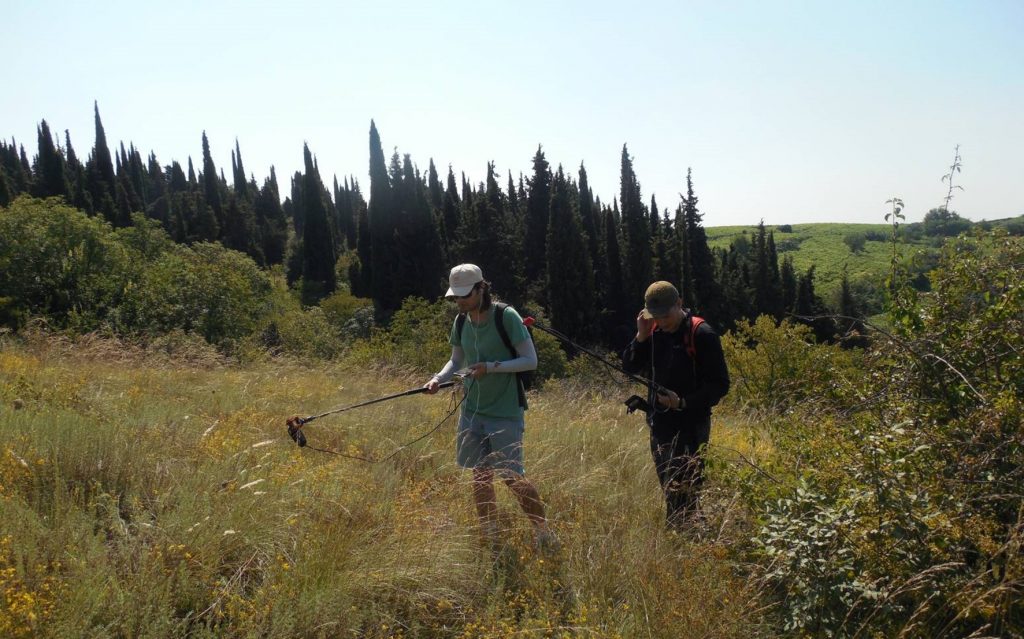
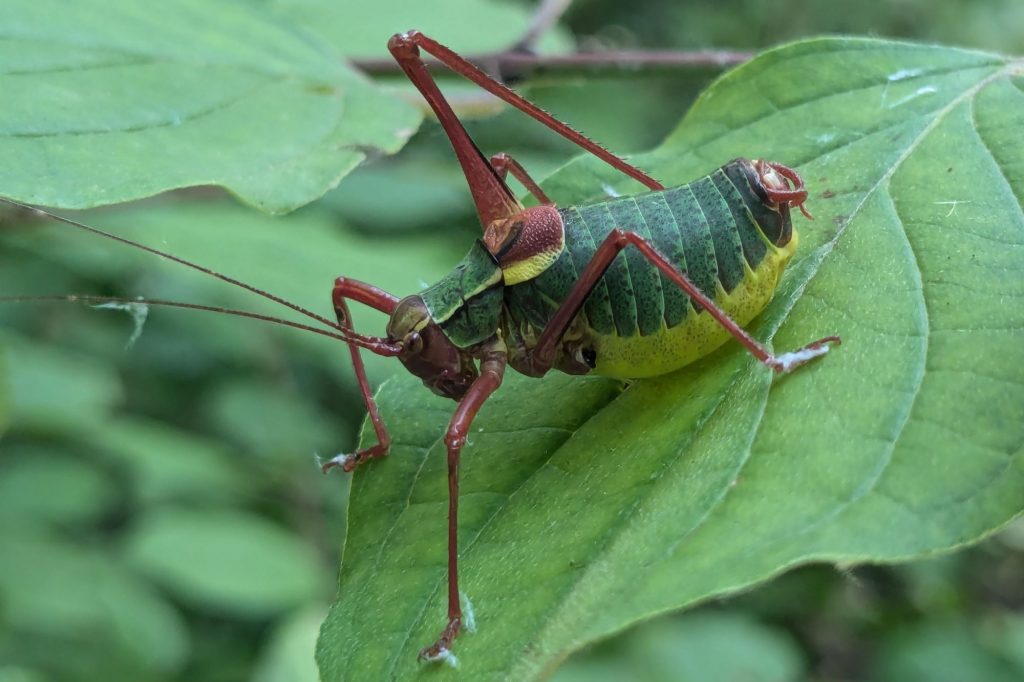
During the workshops, nearly 100 species were recorded in just a few days, contributing many new tracks to the Xeno Canto platform. These workshops were the first of their kind in both countries, focusing on Orthoptera bioacoustics and documenting little-known endemic species that have yet to be extensively studied.
- Preparation of the meta-database
Expert taxonomists are working to identify species from the collected sounds, a crucial step in creating a reliable acoustic database. The project has also made significant progress in expanding the taxonomic coverage of the European Orthoptera Sound System (EOSS) and is preparing to integrate additional sound libraries.
Collaboration with TETTRIs consultants has helped advance the use of machine learning techniques for sound recognition.
A key challenge has been the complexity of recording and analysing the wide variety of Orthoptera sounds across different species and habitats. To overcome this, the project has implemented adaptive recording techniques and advanced signal processing methods, ensuring high-quality data collection in even the most challenging field conditions.
What’s next for TEOSSS?
In the coming months, TEOSS will focus on conducting its planned international workshops, providing practical training in field recording techniques and taxonomic identification skills. These workshops will be crucial in expanding the network of contributors to the acoustic database.
Looking ahead, the TEOSS journey represents a significant step towards creating a comprehensive, open-access resource for Orthoptera identification and research. The lessons learned and methodologies developed through this project have the potential to inform similar initiatives for other insect groups and in other regions.
As the project moves forward, the focus will be on refining the AI-based sound recognition models, expanding the acoustic database, and fostering a community of both professional and citizen scientists engaged in Orthoptera research.
“Ultimately, we aim to leave a lasting impact on European biodiversity studies, paving the way for more efficient and accurate monitoring of these ecologically important insects!”
Stay connected
To keep up with TEOSS’s progress, follow their work at:

